SNL’s Latest Pride Month Skit Is a Must-Watch for HR and Marketing Professionals
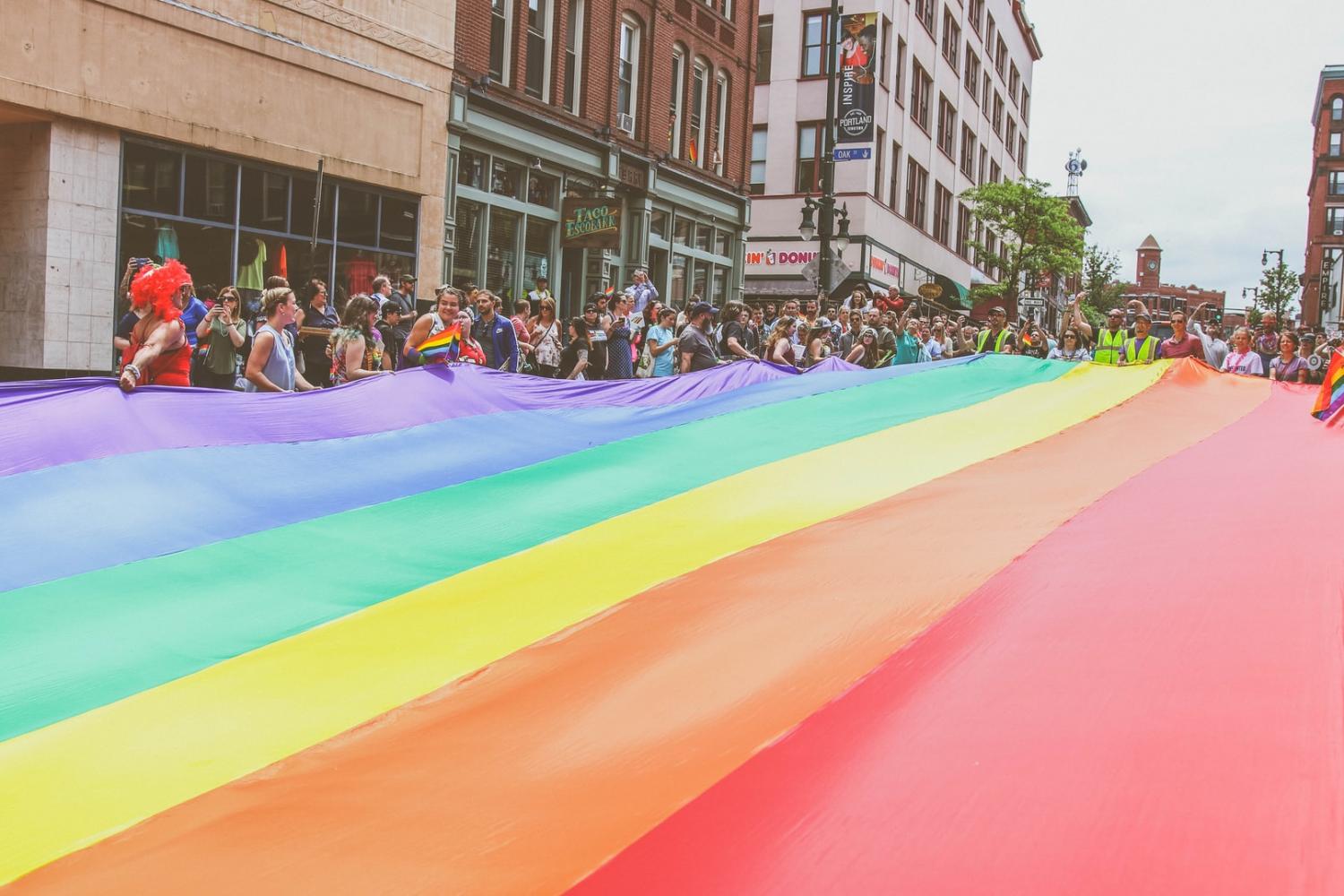
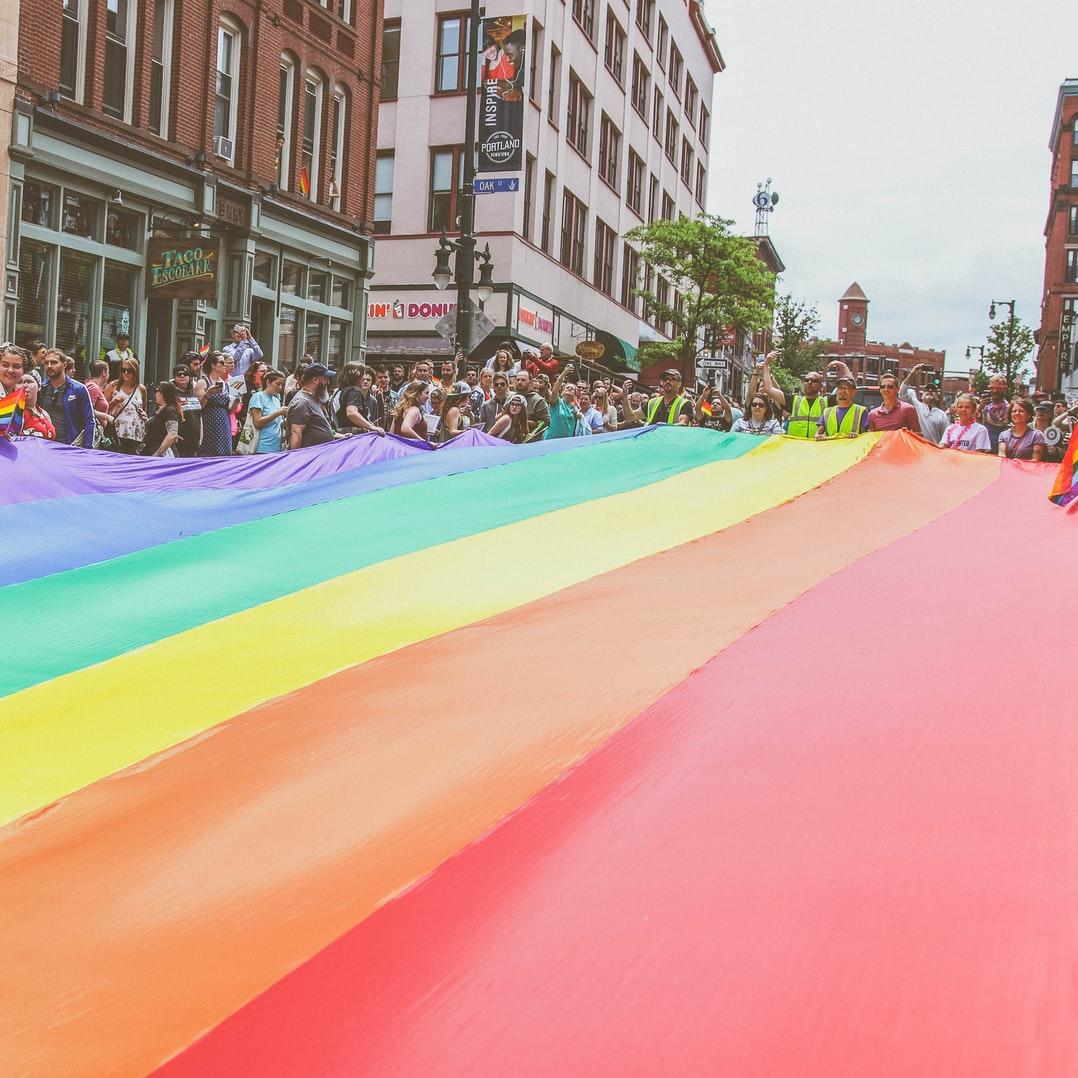
Brace yourself: Pride Month is almost here, which means companies will still start overlaying their logos with the rainbow flag and proclaim their “allyship” with the LGBTQ community.
Of course, a quick search engine check will reveal that too many of these companies have also funneled contributions to political leaders who have supported legislation that is hostile toward LGBTQ rights.
But never mind that hypocrisy, as we have at least one reason to celebrate how the queer community is breaking through.
Last Saturday, SNL brilliantly skewered what critics have long said has frequently been an off-message, corporate-sponsored Pride Month for years. But the video, in which Lil Nas X makes an appearance (and really gets things rolling), also shows how far the comedy sketch show has come showcasing LGBTQ voices over the past decade. As much as the skit throws shade at some of Pride Month’s cringeworthy and eye-rolling aspects, it is also a celebration of queer culture, presented by LGBTQ actors and writers, not toned down, with zero apologies and nary a concern if straight people get it or not.
Editor's note: Be sure to subscribe to our Brands Taking Stands newsletter, which comes out every Wednesday.
As with most of the entertainment industry's productions in television and movies, gay characters on SNL were long the frequent punchline and cruel butt of jokes on the show. The first openly gay cast member of SNL, Terry Sweeney, lasted only one season during the mid-1980s: His characters were often the crassest and clichéd cliched gay stereotypes; meanwhile, off the set, Sweeney had to endure the homophobic taunts of colleagues such as Chevy Chase.
Fast forward more than 35 years later, this season SNL has showcased three openly queer cast members, and several sketches have clearly been written with the point of view of those comedians and gay writers. For years, gays were the targets of humor often written by their straight colleagues. Now, the work of those including Bowen Yang and former SNL writer Julio Torres has turned that dynamic on its head: Gay writers and actors are creating more content, and it’s up to the straight audience to figure out the jokes, satire and context.
And therein lies the lesson this SNL parody offers to corporate America: The rainbow flag and boilerplate language that says “We stand with the LGBTQ community” are not inherently bad, but now, they are nothing more than the baseline. Many of those press releases that have been emailed and posted publicly are clearly written by a straight person, which again, isn’t necessarily wrong. Nevertheless, it’s clear gay employees or the wider LGBTQ community often had zero input in those Pride Month proclamations. That oversight certainly shouldn’t occur this year, considering the myriad of bills in statehouses across the U.S. that are clearly designed to shame transgender citizens and their LGBTQ neighbors.
So why should marketers and human resource folks watch SNL’s Pride Month video? Once you get past the NSFW references, the clip can also be viewed as a reminder for corporate managers to check in with their LGBTQ employees, ask the how they are faring amidst all the news out there, what challenges they still face as gay and queer employees in their organization and what they would like to see from the organizations for which they work.
Bottom line, many of us don’t want to be made to feel like the “token gay” that demonstrates their company has a “tolerant” or “working” culture. We just want to be, be ourselves, and only be – period. The end.
Image credit: Mercedes Mehling: Unsplash
Wesley Clark Connects the Dots Linking Climate Change and National Security
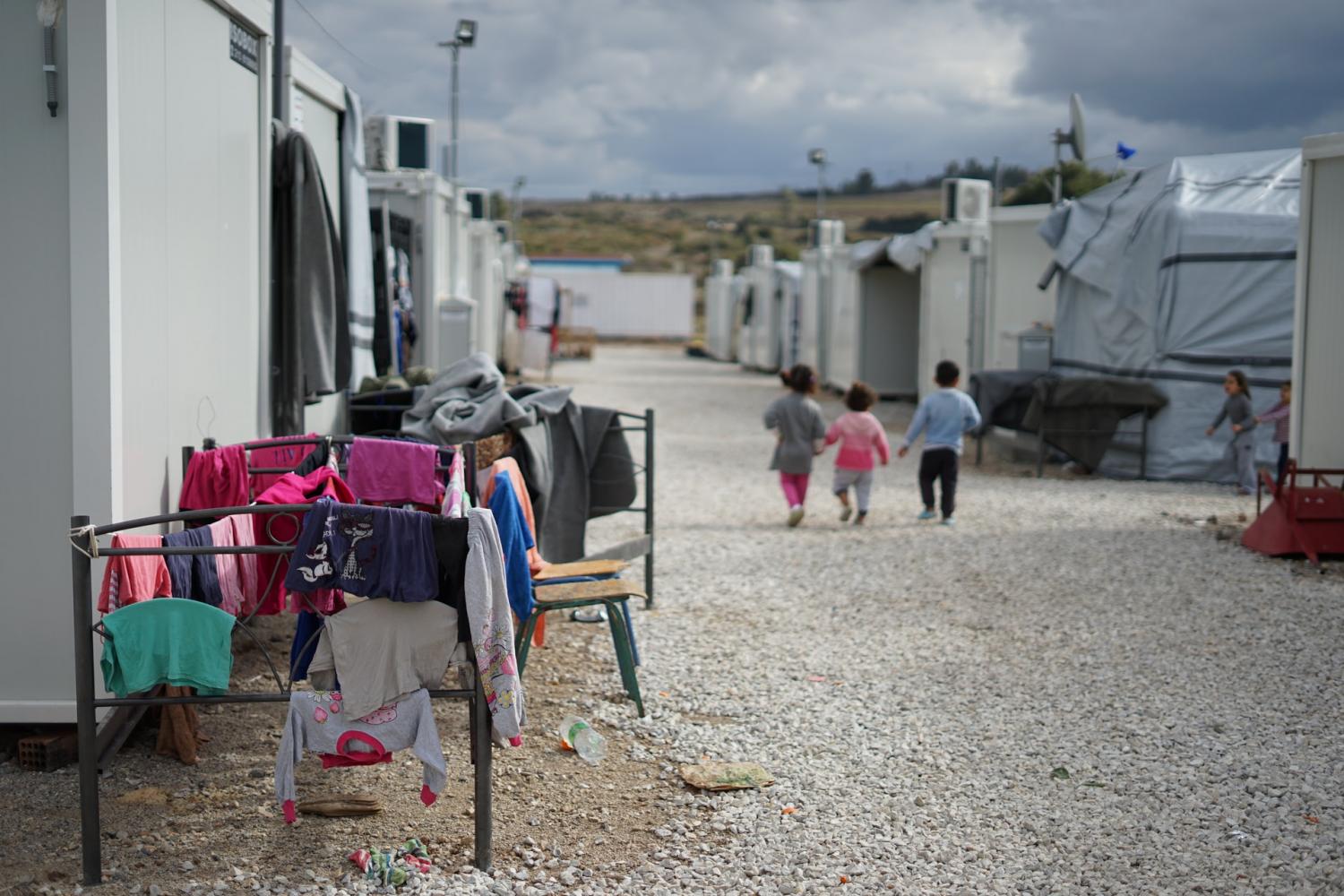
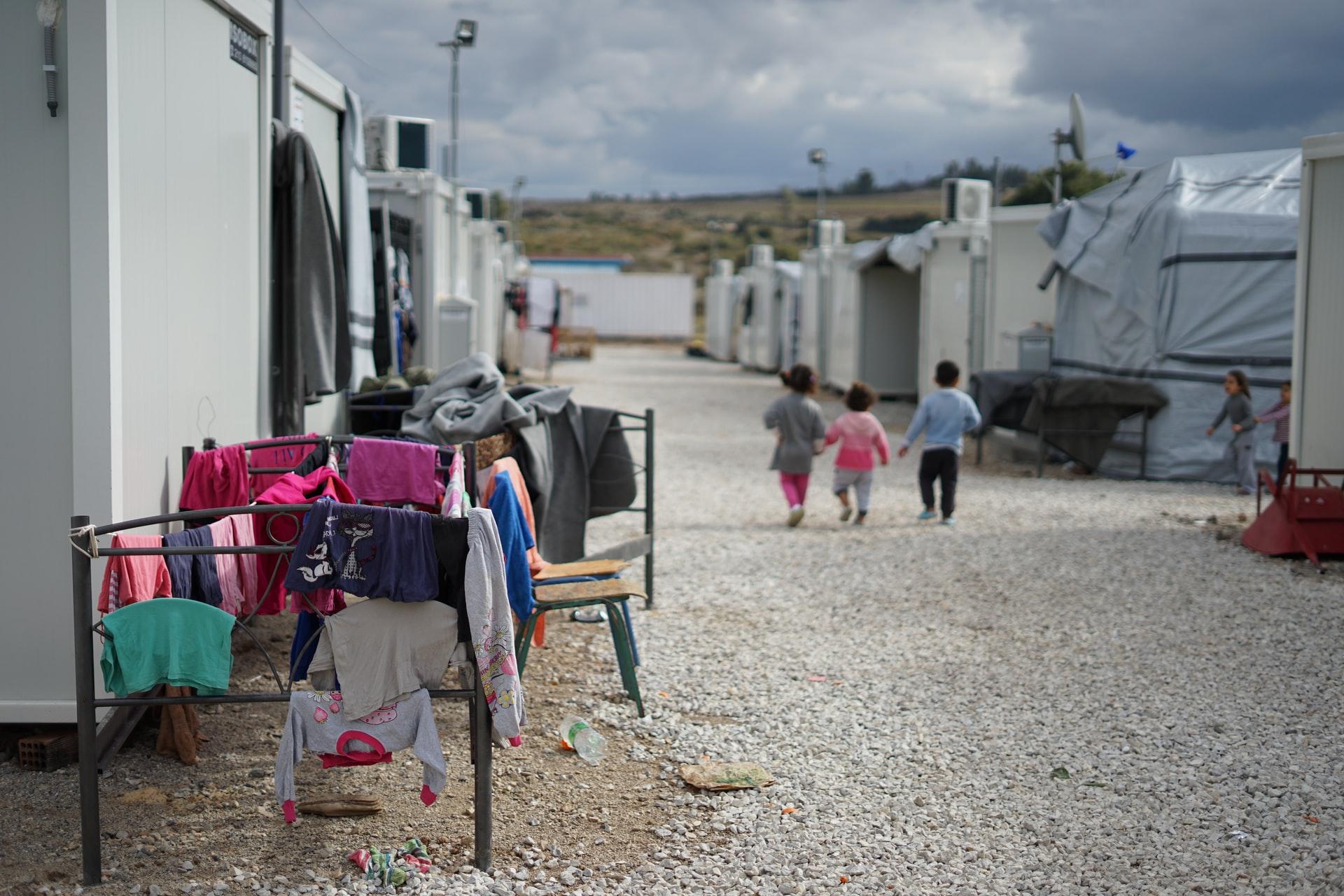
Photo: A Syrian refugee camp outside Athens, Greece. Millions of Syrians have fled their country since conflict erupted a decade ago – with climate change being among the reasons exacerbating tensions across the nation, say many experts.
In March 2021, three Russian submarines broke through old ice in the Arctic. According to retired four-star general and 2004 U.S. presidential candidate Wesley Clark, we should be paying attention to this from more than solely a national security perspective: Climate change and national security are inextricably linked, and have significant implications not just for physical security, but long-term financial security as well.
Security concerns are not new, but pressure is increasing as impacts worsen
In 2012, the American Security Project, a bipartisan nonprofit led by political, military and corporate leaders, released the Climate Security Report, which concluded that climate change is one of the most significant challenges facing global security systems. Since then, the U.S. Department of Defense (DOD) has in many instances been at the forefront of taking action, in particular at its installations, which face threats from floods, wildfires, and hurricanes.
DOD also recently announced a department-wide initiative to look at climate adaptation and resilience. In addition to resilience needs to upgrade installations to be more sustainable and efficient, deploying clean energy and water efficient technologies on such a large scale can help improve market efficiencies and spur innovation.
But national security challenges go far beyond clean technology installations. As the effects of climate change intensify, leaders often call the military to deal with the consequences, from state national guard members deploying during hurricanes to changing climate patterns impacts on operational capabilities to numerous hotspots around the world. “Russia doesn’t need to drive through Arctic ice,” General Clark told TriplePundit, “but the fact that it can signals something significant relating to climate change. Arctic caps are the weather makers of the world. Their weakening is critical to our national security.”
The financial implications related to climate change
Further, as hotspots multiply, the links to financial systems become increasingly clear. General Clark noted that the U.S. dollar is now our principal national security lever through sanctions. But now, direct defense dollars are funding aid to humanitarian crises as well as to intervene in conflict situations worldwide.
For example, though climate change is not the only cause, evidence indicates that the conflict in Syria was exacerbated by water scarcity and food insecurity. This is what’s known as a threat multiplier: Only one is enough to throw fuel onto an already smoldering fire.
General Clark and his son, Wes Clark, Jr., are the focus in a documentary, Hot Money, which points out the links between finance and climate change, a connection they say we didn’t fully understand even a few years ago. “None of this occurs in a vacuum,” Wes Clark, Jr. told 3p. “Any small changes have repercussions. Climate change affects investments, real estate, individual’s personal wealth. Our short-term approach to everything has long-term impacts.”
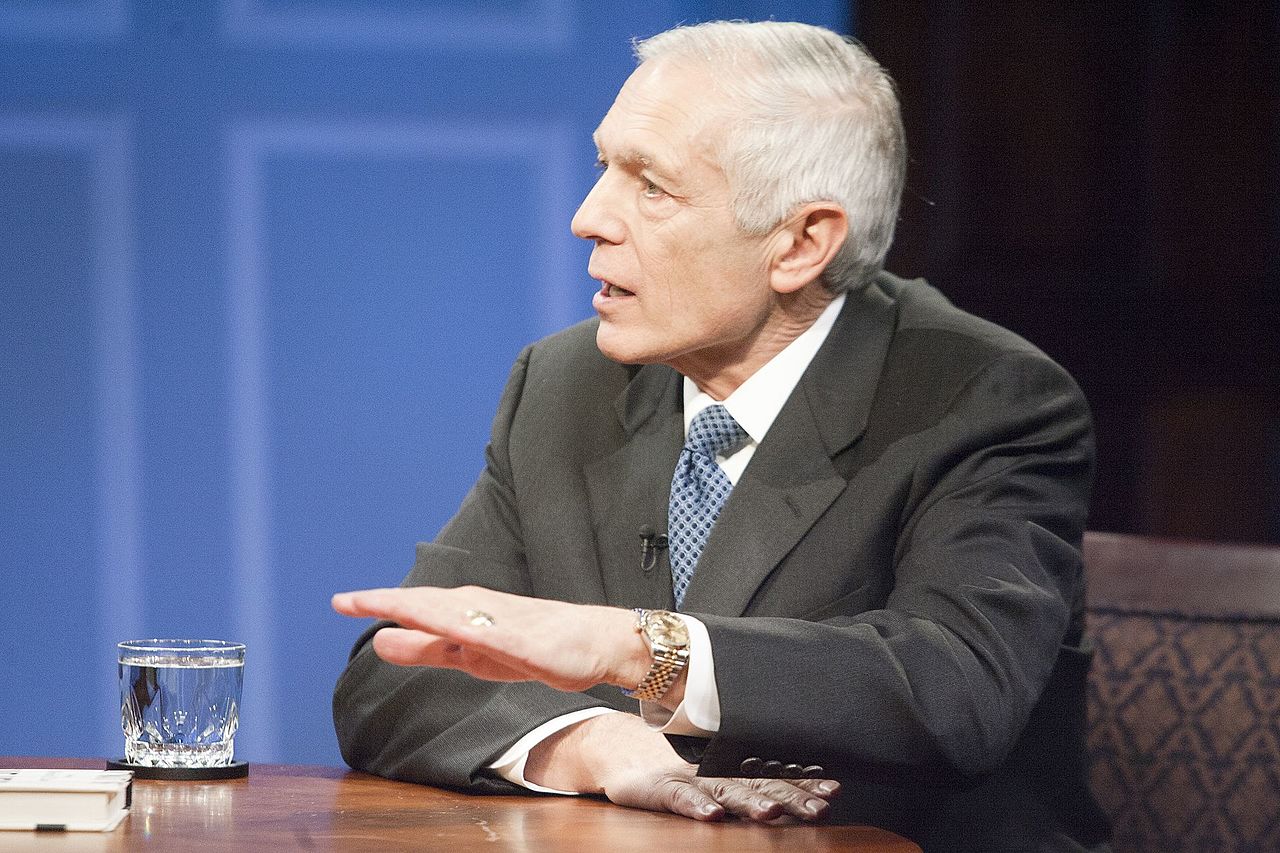
Taking action on climate change in a business-as-usual manner is putting our financial system at risk. And it’s a circular argument: It can be difficult to make the case to change how we approach this complex problem to people, government and companies that have been successful under the old system. But the point is that the old system will not continue to work as it has in the past. And climate change requires both public and private investments and leadership.
Policies must reflect a 21st-century world and its risks
Smart policies can enable necessary private investments and technological innovation. And while regulations can gum up projects, they can also ease them, if developed thoughtfully. For example, more streamlined permitting could allow the latest technologies to be deployed in a timelier manner.
For example, a few years ago, 3p's Leon Kaye and I traveled to Israel and met with officials at the Sorek Desalination Plant, the largest and one of the most efficient, cutting-edge desal facilities in the world. The same company that built Sorek also built the Carlsbad desal facility in California. The difference was that because of the national prioritization of water in Israel, the permitting process had been streamlined, allowing the latest technologies to be deployed. In California, however, by the time the Carlsbad facility was built, it was using technology that was over a decade old. The high energy demands of desal means access to the most efficient technologies is critical.
More nimble regulations are necessary to adequately handle the needs of transitioning to a cleaner economy to address climate change. “Standard project management practices slow everything down,” Wes Clark, Jr. told 3p. As a renewable power developer, he has seen firsthand the challenges to onboarding new technologies. Some regulations are state-based and vary widely, and that’s compounded by the challenges with federal regulations and (mostly) privately-owned electric utilities. The system as its set up is inefficient, both financially and environmentally.
The solution, according to General Clark, is that public rallying must score the attention of both policymakers and the private sector. The bottom line is that climate can have an impact on every facet of every life, and there is no workaround to addressing climate change as such. Finance and investing already feel the heat from climate change impacts. A policy solution is not enough without also a private investment solution. “We’re living off the dividends of a system we built a century ago,” noted Wes Clark, Jr. “If we don’t reinvest, systems collapse over time.”
Whether those systems are in this country or in others, the global security implications of climate change will affect the bottom line. Like those Russian subs breaking through Arctic ice, public and private sector leaders need to break through the logjam to advance solutions in a 21st century world.
Image credit: Julie Ricard/Unsplash
Why Uber and Lyft Should Quicken Their Adoption of EVs


These days, 2030 corporate climate commitments are all the rage. Uber and Lyft have their own — both aimed at transitioning their North American ride-share fleets (with Uber adding Europe) to electric vehicles (EVs) within this decade. Lyft made its commitment a year ago in June, and Uber announced its version a few months later.
A year later, a study by BloombergNEF indicates minimal progress toward the duopoly's goal. In the United States, where ride-hailing activities are concentrated, only 0.5 percent of ride-hailing vehicles are electric — compared to the nation’s overall adoption of 2.8 percent, in part based on 2020 new car registrations.
Continuing to trail overall EV adoption in the U.S. won’t work, sister publication Bloomberg Hyperdrive notes, especially if electric car sales are expected to take another decade before they reach one quarter of the nation’s total new car sales.
Little support for drivers, few subsidies for companies?
One hiccup in the race to reach a 100 percent electrified fleet is that workers, being independent contractors, have little incentive to invest in a new car by their own volition and often don’t make enough money: an average of $12 an hour after expenses, to justify the initial payment, Bloomberg Hyperdrive explains. Of course, if a driver is able to purchase an EV, cost savings from operation can reach thousands of dollars over the lifetime of car ownership.
On that point, Uber and Lyft have been careful to call drivers contractors and not employees. The passage of California’s Proposition 22 is a good example of the stake companies in the shared economy have in keeping such workers as contractors. The ballot initiative exempted companies like Uber and Lyft from legislation that would have made drivers employees, thereby entitling them to benefits and protections such as unemployment insurance and even healthcare. The measure became the most expensive in California history, with companies spending $200 million to successfully sway voters to approve the message, bypassing a law the state’s legislature had previously passed.
Companies say they need help from governments. Reuters and the Union of Concerned Scientists have estimated that meeting the EV goal in just California would cost $1.73 billion, even when considering government subsidies and increased affordability over time. Reuters reports that Uber wrote a letter to the California Air Resources Board (CARB) last year, asserting that the board’s proposal for 90 percent ride-hailing EVs by 2030 would require “sufficient” subsidies to be feasible — even though CARB’s proposal is less ambitious than Uber’s own deadline. The rule was adopted unanimously on Thursday.
Investors aren’t budging on climate concerns, either
Not only do ride-sharing giants have incentives from California to fulfill their promises, but they have plenty of push from investors as well.
Despite Uber and Lyft’s potential to be part of a sustainable transportation system, some environmentally-conscious investors have been wary of buying in. The Union of Concerned Scientists’ February report on the industry’s climate risks revealed that ride-hailing results in 69 percent more climate pollution than the trips they otherwise would have displaced.
Investors don’t look to be letting up on their climate focus. Morrow Sodali’s 2021 Institutional Investor Survey found ESG (environmental, social and governance) issues playing an increasingly significant role in investment decisions, with climate change topping the list. Respondents report a direct connection between ESG performance along with financial success and a willingness to engage with companies on their progress.
Taking an indirect approach to the EV revolution
Thus far, Uber and Lyft aren’t making any down payments for drivers. They’re taking a more indirect approach to their goal. Uber CEO Dara Khosrowshahi told The Verge that his company may not have been the first to set this sort of goal, but his team intends to be the first to bring it to life. What Uber has been doing is implementing a surcharge for riders who request a hybrid or electric vehicle. As of now, drivers only gain an extra 50 cents per ride.
The company says it is also spending $800 million toward its own EV transition. Bloomberg Hyperdrive identifies this sum as mostly related to discounts the company negotiates with automakers and charging companies and additional fees it charges riders in certain areas. Uber has also been partnering with EV startups.
For its part, Lyft is also taking a more systemic point of view, negotiating with manufacturers and working with policymakers to expand tax credits and charging infrastructure in an attempt to make EVs more affordable and accessible to drivers. Through its Express Drive rental partner program, Lyft also rents out EVs in Seattle, Atlanta and Denver.
The company began offsetting the carbon impact of its rides in 2019, but decided to stop the program and focus on an EV transition this time last year.
Are Lyft and Uber able to live up to the promises of ride-sharing?
As Sam Arons, director of sustainability at Lyft, told TriplePundit in 2019, ride-sharing has the potential to help car-dependent societies transition to more sustainable, climate-friendly and human-centered transportation systems. He said, “We think that if we can help to remove the need for personal car ownership, we can start to see a reduction in the need for so many parking spaces, a reduction in the need for so many lanes. We believe that, over time, we can take these public spaces back from cars—turn those parking lots into parks, widen sidewalks and improve street life.”
While progress toward this vision was likely difficult to make during the pandemic, especially with a shortage of drivers, global commitment to climate progress has only strengthened. With California as an early indicator, it’s clear an EV transition will be coming. Will Uber and Lyft lead the way, or follow what has become a more noticeable trend across the U.S.?
Image credit: Robin Pierre/Unsplash
Can Wildfires Be Prevented?


Wildfire devastation grows annually as rising global temperatures lead to more frequent and intense fires. The number of people affected by wildfires grows as a result, with housing developments in high-risk fire zones putting 4.5 million U.S. homes in danger. Of the top 10 wildfires in California history, five occurred in 2020. The human costs are multiplied by degradation in air quality, risk to water supplies and even the difficulty of finding enough firefighters to combat the fires.
How do we turn these historic fires into learning opportunities and create sustainable, thriving forest lands for the future?
Wildfires can be managed more effectively before and after they happen through collaboration among NGOs, government agencies such as the Forest Service or the Bureau of Land Management, and private landowners. The maintenance strategy needs to be on the terrain level rather than an ownership level, and these stakeholders must coordinate effectively with proactive strategies to effectively manage wildfires. With everyone working together, we can ensure that forests will thrive for future generations.
Steps to wildfire prevention
Decrease global temperatures. Significantly reining in global emissions is an urgent priority for stopping the increase in wildfire risk. Despite greater awareness and concern for warming temperatures, emissions continue to rise. Planting trees at scale is one way to absorb carbon from the atmosphere and cool surrounding areas, but this must be paired with drastic behavioral change.
While personal choices are important to reversing climate change, the greatest decreases in emissions will only come when corporations make and follow through on commitments to change. Innovative companies will push themselves to reduce emissions to zero, through a combination of sustainable processes and partnerships that offset remaining emissions. Industry-leading commitments, such as those by Procter & Gamble along with its Bounty, Charmin and Puffs brands, to plant 500,000 trees in areas devasted by fire, lay the groundwork for a future with less severe wildfires.
Build partnership and coordination for land management. Kieran O’Leary, a registered professional forester with more than 25 years of experience and one of the many partners the Arbor Day Foundation works with regularly, helps us to see the value of managing forests at a landscape level.
“It’s a huge endeavor because forests cross property lines. Whether it’s the Forest Service, Bureau of Land Management, or private and small landowners, we all have to get on that same page,” O’Leary says. Individual owners and managers need to work together to ensure that fire prevention best practices are in place across the breadth of the land.
Use prescribed burning and grazing. O’Leary also suggests utilizing prescribed burning and grazing to manage the forest underbrush: “Once we reestablish these forests, we have to manage them and keep their fuel production low so that we can reduce these megafires in the future." O’Leary suggests a “mixed bag of prescriptions” to help prevent megafires, including everything from prescribed burns to cattle grazing that can prevent fuel from building up over time.
Tools available after wildfires occur
Planting and soil management. After a fire occurs, we have several key things to keep in mind for optimal replanting. The first is in how trees are spaced; properly spaced trees cut back on fuel for future wildfires.
It’s also crucial to ensure trees are replanted as soon as possible to prevent soil erosion. When wildfires burn away trees and leave bare soil, the soil erosion can lead to flooding and mudslides during rainstorms. This can impact communities by damaging homes and buildings as sediment moves downstream. When soil has already eroded, it is harder to get seedlings in place, which is why planting new seedlings quickly is key.
Urgency in replanting efforts. Replanting quickly after a wildfire has been extinguished and the land has been properly prepped is important to give the seedlings the best chance for survival. O’Leary notes that if replanting happens soon after a fire, the seedlings have to compete with less brush and other vegetation. This allows them a better opportunity to take root and increases their potential survivability. The more time that elapses before seedlings are replanted, the more the costs will increase for vegetation management and removal. After a fire happens, trees must be grown from seed to enable a replanting project, so every project has some preparation time before planting begins. Working with corporate sustainability leaders and partnering organizations allows us at the Arbor Day Foundation to replant faster and at a larger scale than any organization can do alone.
We can create and nurture safe and more sustainable forest lands. We can and we must. Failure to do so is simply not an option for our climate and the people those forests serve. We are thankful to all of the agencies, landowners, corporate sustainability leaders and partnering organizations helping to drive this positive change in forest management.
This article series is sponsored by Procter & Gamble and produced by the TriplePundit editorial team.
Image credit: Malachi Brooks/Unsplash
Brands, Voter Engagement and What Comes Next for Corporate America
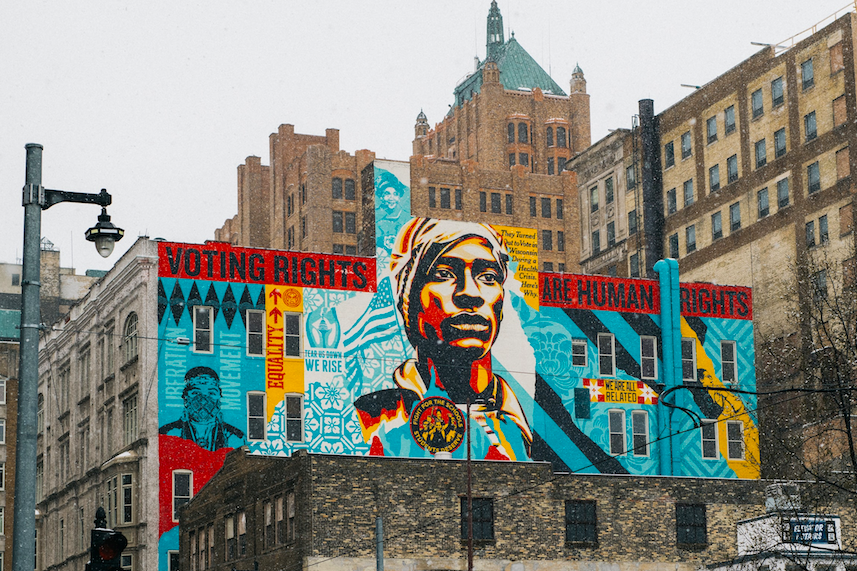

Photo: A mural in Milwaukee, WI installed in the months before the 2020 U.S. elections. Successful voter engagement efforts led by companies across the U.S. are now at risk to various states’ legislation that critics say suppress the right to vote.
The 2020 election may be behind us, but voting – and corporate America’s role in it – continues to make headlines well into 2021. With Congress debating bills like H.R. 1 and H.R. 4 and states like Texas pushing forward controversial legislation to restrict voting, a lot of companies are contemplating what to say and do on the voter engagement front. These questions aren’t going away any time soon.
In a democracy, voting safely and securely should be easy, but too often, our government leaders don’t provide the resources or accessibility people need to vote – or in the worst case-scenarios, they actively work to undermine these resources. To bridge that gap, companies have risen to the occasion and have been successful and boosting voter engagement. Now, consumers and employees alike have grown accustomed to looking to these brands for trustworthy information – and they’ve shown their appreciation.
Businesses’ efforts on voter engagement have been a success
For many brands, the pandemic, economic downturn and racial justice uprising catalyzed a movement to educate voters about safe and secure ways to cast their ballot. Companies like Instacart, United Airlines, Yelp, and the NFL laid the groundwork in 2020 to institutionalize civic responsibility programs, and initiatives like Power the Polls and Vote Early Day brought over 1,000 corporate partners together to help spur historic voter turnout.
Unfortunately, some of the simplest voter engagement initiatives are now being threatened by an alarming trend away from accessible voting. Last year, companies like UberEats, Shake Shack, and Milkbar worked with Pizza to the Polls to distribute free food for all near polling places experiencing long lines: a practice that would be rendered illegal under laws like what we’re seeing in Georgia and Florida. All of a sudden, the work of so many brands to champion democracy are under attack. New polling shows that 82 percent of Americans say they would feel more favorable about a company if they supported policies to make it easier for Americans to vote and register to vote.
First, it’s critical to understand just how important these efforts continue to be for businesses across the country. Following the 2018 midterms, we studied the role that pioneering brands like BlueCross and BlueShield of MN, Endeavor, GAP Inc., Patagonia, Snap Inc., Spotify, Target and Twitter were playing in voter engagement.
Of these eight companies we profiled, all reported a rise in demand for corporate civic responsibility from both employees and consumers. Several business leaders went so far as to say that being unresponsive to these demands could be a risk to their business. Today, the data is even more compelling: after reading American Airlines’ response to Texas’ newly proposed voting legislation Senate Bill 7, 71 percent of voters say they agree with American’s statement (including a majority of both Republicans and Democrats) and 67 percent say it makes them view American Airlines more favorably.
Recognizing the importance for continued brand-led voter engagement, there are rules of thumb to successfully thread the needle of non-partisan, pro-democracy action.
Find the gaps that your company can fill and engage expert advisors
Take time to identify which issue area is particularly important to your stakeholders and determine what you need to do in order to speak to this issue with authority and authenticity. What resources might help your stakeholders engage? How is your company uniquely positioned to meet these needs? Whether you’re starting from scratch or looking to improve existing initiatives, there are a number of consultants ready to help guide brands and businesses on civic engagement programming.
Partner with organizations doing work that aligns with the brand’s ethos
Building relationships with nonprofits who are at the frontline of a specific issue area can help lend the brand credibility and achieve deeper impact. Grassroots leaders have worked in this space, including the quest to drive up voter engagement, for years: Listen to what they need, find common ground and determine how you can make an impact. Additionally, there are a number of other companies ready to trade notes and share advice with their peers.
Don’t wait to get involved: Help internal teams work collaboratively on civic responsibility now
Companies don’t need to wait until an election year to become civically involved. You can begin launching voter engagement efforts across departments and build strong internal teams that can integrate this work more seamlessly into the brand’s identity. If the tidal wave of support for civic responsibility didn’t convince you in 2020, don’t wait – this trend’s here to stay.
The bottom line is that corporate civic responsibility work isn’t done. Companies have stepped in where the government has fallen short because they know that democracy is and will continue to be good for business well beyond 2020. Every business – no matter the industry – has a role to play in continuing to serve as a trusted source of information and serve as a civic cheerleader to their audiences -- because 2022 is right around the corner.
Image credit: Tom Barrett/Unsplash
In China, a Shift is Underway in Supply Chain Sustainability
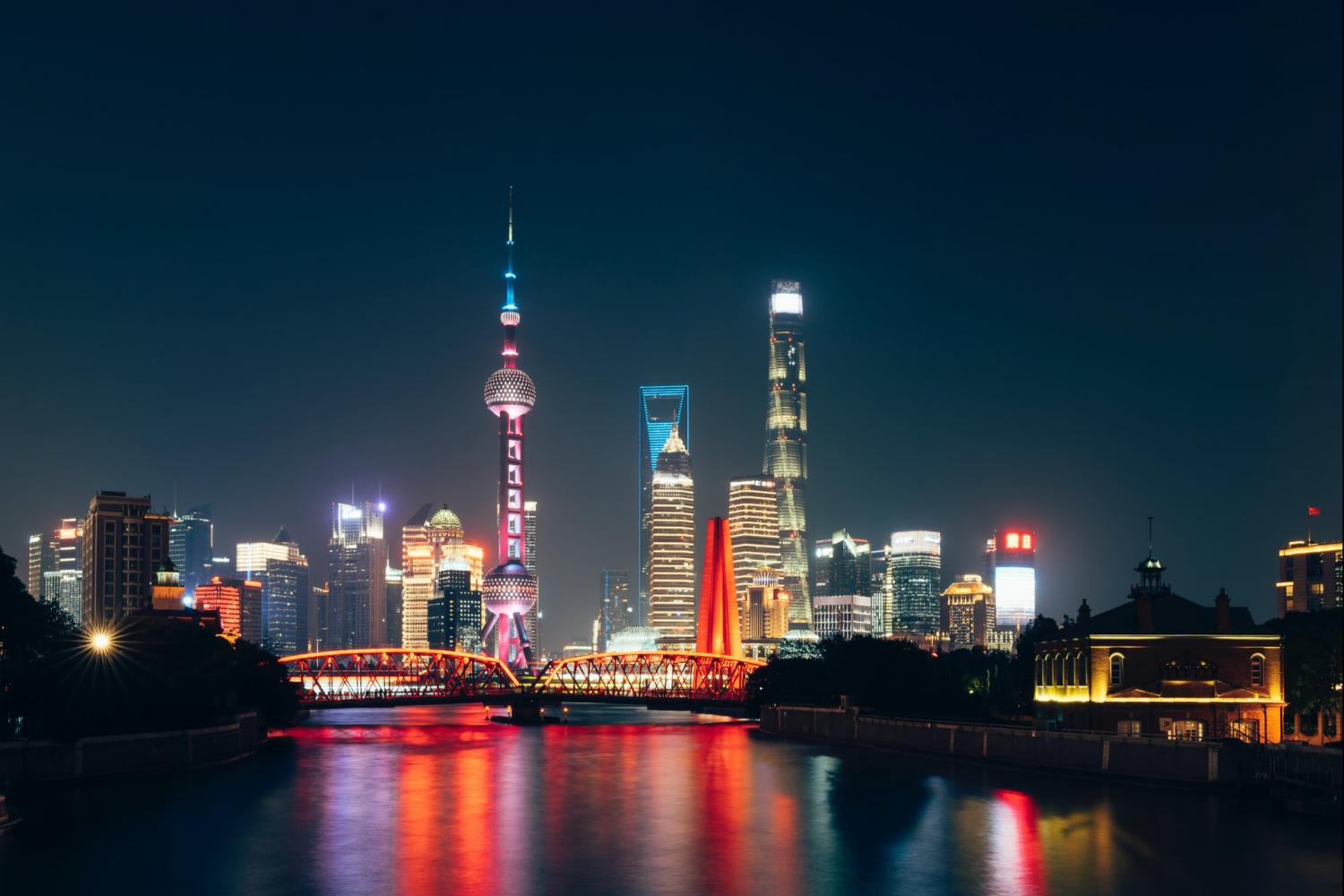
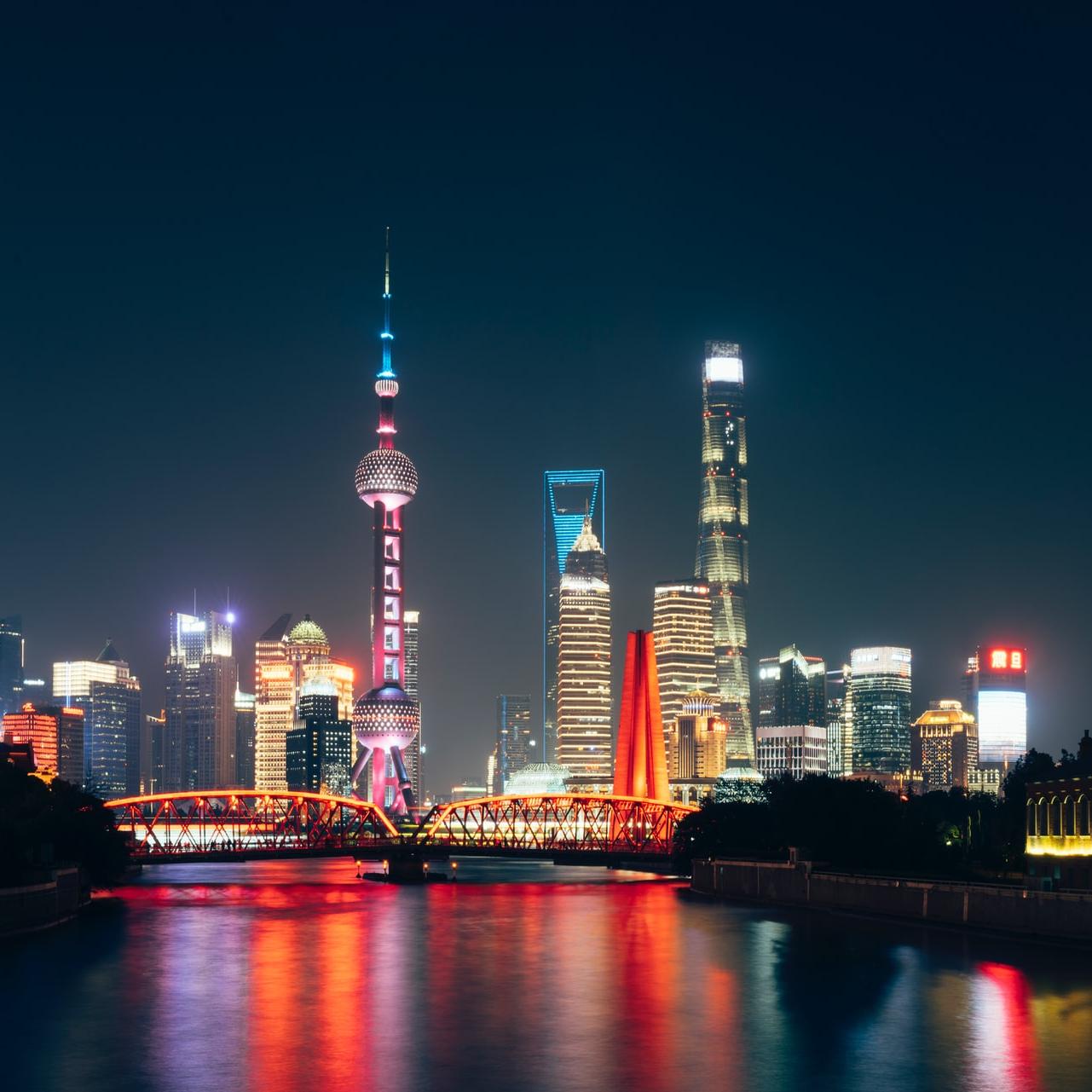
In recent years, businesses with key manufacturing or supply chain operations in China have been caught off guard by stringent and often drastic approaches to environmental regulation in China. Such changes have been a dramatic departure from previous decades of little to no environmental protection and enforcement. The result could be greater supply chain transparency and sustainability.
Chinese environmental regulations and enforcement procedures have forced a shift from controlling total emission loads with fixed standards, to a more dynamic and comprehensive approach of achieving environmental goals by any means necessary. Many Chinese environmental policies since 2015, including the country’s Environmental Impact Assessment (EIA) process, have been designed to address the challenge: “What else can be done if all companies have met discharge standards, but the environment is still deteriorating?”
Environmental impact assessments in China
Environmental Impact Assessments were adopted in post-Mao China as part of international regulatory best practices. EIA’s have been formally conducted for large construction projects in China since the 1990’s. Political corruption - including bribery and graft - has been widespread and tackling this issue in the EIA approval process was an aspect of President Xi Jinping's anti-corruption campaign, which began in 2013.
Amendments to the Environmental Protection Law in 2015 and the Environmental Impact Assessment Law in 2016 and 2018, resulted in strengthened environmental enforcement at the province, municipality and county level. Controls over manufacturing have become, in some cases, more stringent than in the U.S. or Europe.
In 2018, the Ministry of Ecology and Environment (MEE) issued a statement outlining its goal of curbing EIA violations and improving assessment guidelines.
Operational risks
More recently, changes were adopted in the EIA process that increased the burden on companies to self-assess. Severe penalties, including factory closure, are now in place for inaccurately assessing environmental impact and the result is increased bureaucratic hurdles. Updates to the EIA registration process are designed to expand administrative efficiency, but these updates also include increased stringency on execution and post-construction processes, with developers and companies assuming more responsibility and greater risk.
One Shanghai-based environmental, health and safety (EHS) manager stated that these changes have made companies “even more reliant on professional third-party EIA agencies” to understand and meet designated requirements.
In the last several years, multiple companies located in Jiangsu, Henan, Hebei and Zhejiang provinces faced legal action including fines and factory closures, when failures in post-construction management were revealed by inspection teams. Regulatory missteps included failing to submit emission or sewage discharge permits; failing to establish or implement self-monitoring pollution accounting systems; or providing false information related to emissions.
Regional environmental goals are an important driver for local environmental protection bureaus (EPBs) and shape actions to achieve local key performance indicators (KPIs). While local laws are linked to central government targets, local governments may customize environmental laws and, in many cases, make them stricter than national requirements.
Mitigation strategies to ensure your supply chain runs smoothly
Companies cannot gain EIA approval and expect to operate without scrutiny unless they continually address and reduce their environmental impact. A more comprehensive and holistic approach considers three dimensions: site, environment and policy.
Site refers to compliance with legal procedures (licenses) and compliance of operational behavior (standards are being met).
Environment means gauging regional sensitivity, environmental capacity, and objectives, e.g. whether a site is in the vicinity of an environmental protection zone or residential areas.
Policy refers to industrial policies and planning, environmental policy, environmental protection infrastructure and industrial park planning. Because each of the three dimensions has its own level of risk, risk levels can be classified according to the actual situation of the enterprise.
Failure to manage all three dimensions increases business risk. As another EHS Manager based in Shanghai recently shared: “We are paying more attention to external factors, such as the location of supplier sites, environmentally sensitive areas, residential areas, land use planning (current and future) and local complaints. We’ve also begun to involve a third party to help track AQI [Air Quality Index], predict heavy pollution weather, and to provide risk alerts to suppliers in order to manage supply chain suspensions or restrictions.”
Updates to the EIA Law are part of a movement toward a more dynamic and comprehensive approach to achieving China’s environmental goals. Understanding changing requirements to the EIA process remains a key task for companies and manufacturers seeking to ensure operational environmental compliance and to avoid risk of business interruption – and a more efficient and responsible supply chain.
Image credit: Jacky Yu/Unsplash
With New Climate Data, the Waffle House Index Scores a High-Tech Makeover
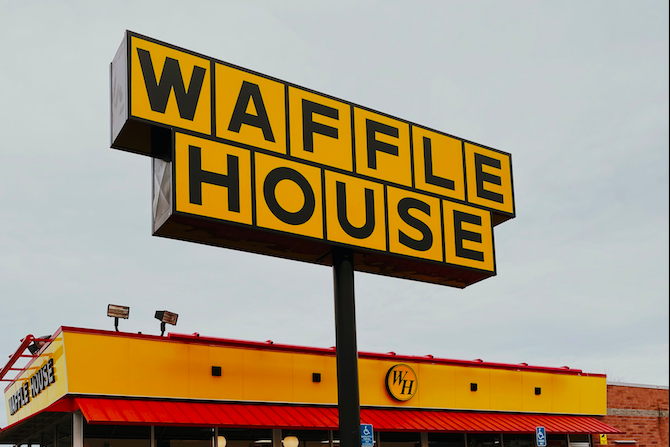
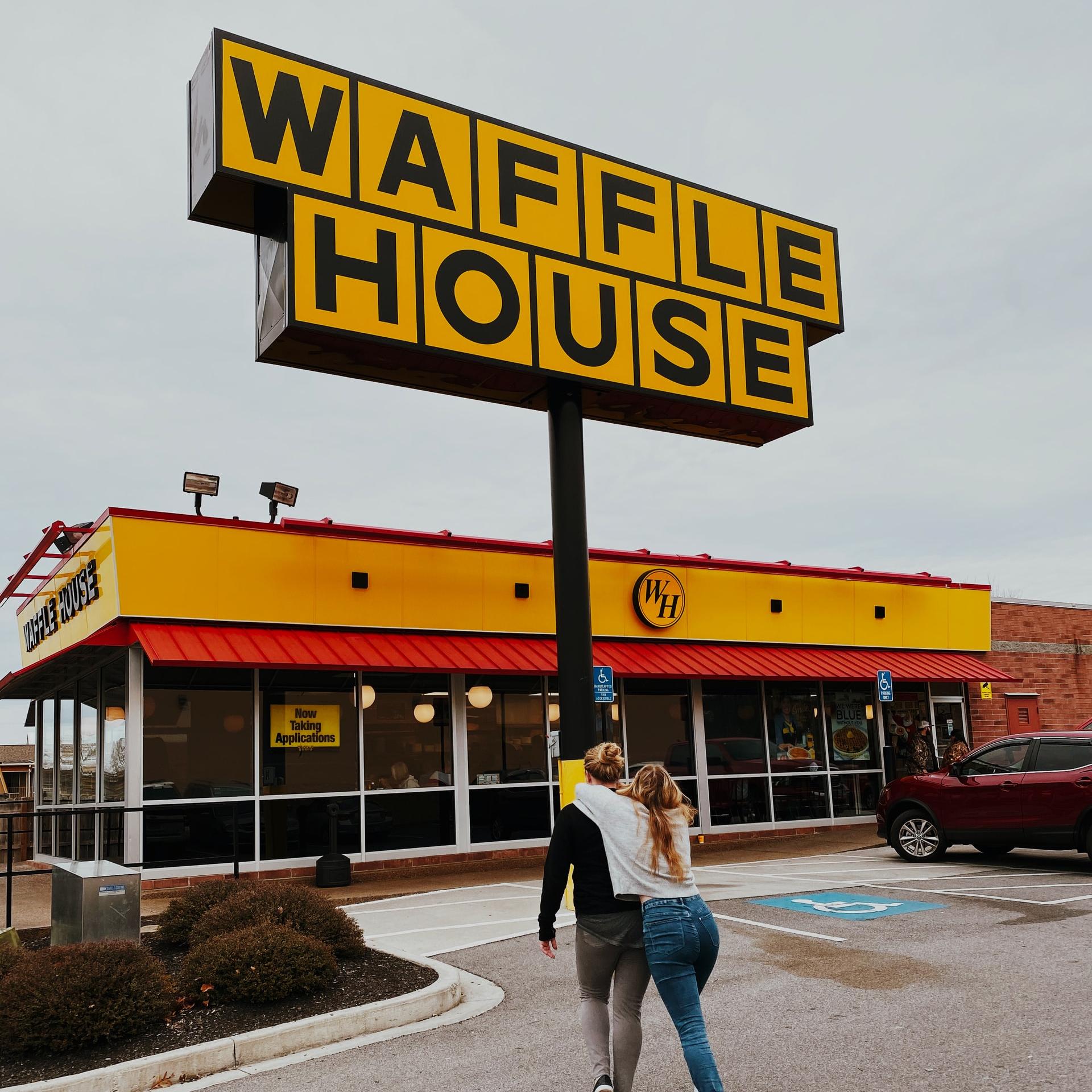
Waffle House is well known for its meticulous and effective disaster response system, but the company was denied a key planning tool over the past four years when the Donald Trump administration delayed the release of climate data through the U.S. Environmental Protection Agency (EPA). Now the Joe Biden administration has relaunched the EPA climate website with a strong focus on providing crucial information and forecasts that will enable Waffle House and other business stakeholders to prepare more effectively for climate-related crises.
What is the Waffle House Index?
The Waffle House Index surfaced about 10 years ago, when the Federal Emergency Management Agency (FEMA) and other emergency response planners took note of the company’s ability to rebound quickly from natural disasters.
Along with a granular employee communication and resource system, Waffle House earned high marks for its strategy of adjusting operations in accordance with the scope of the disaster. That is the Waffle House Index in a nutshell. If a Waffle House is closed during and after a disaster, emergency officials know that the impacts are widespread across the entire community.
The Waffle House Index resurfaced at the beginning of the COVID-19 lockdown last year, in March 2020. While the Trump administration continued to dither over a national response to a history-making crisis, a patchwork of individual states imposed lockdowns. Waffle House red-flagged the situation by shuttering hundreds of its stores, including some in states that had not yet imposed a lockdown. Unfortunately, former President Trump ignored the warnings.
Communities suffer when climate data goes missing
When the Trump administration delayed the release of climate data, it was not a simple matter of hiding information. The policy hobbled the ability of businesses to plan efficiently for disasters and assist in recovery.
Somewhat ironically, several months after Trump first took office FEMA posted an article on its blog, in which it solicited financial donations and other assistance for communities impacted by hurricanes Harvey and Irma. The post also described how disaster planning by businesses like Waffle House is essential for community recovery.
“Businesses in communities are often some of the biggest drivers of recovery. If stores can open, people can go back to work. If people can go back to work, they can return to at least one piece of a normal life—and that little piece of normalcy can make a big difference,” FEMA wrote, adding that every business from hardware stores to coffee shops can play a role in recovery.
More climate data for better business planning
Against this backdrop, the Biden administration is reviving EPA’s climate change website.
“For the first time in four years, EPA now has a webpage to guide the public to a range of information, including greenhouse gas emissions data, climate change impacts, scientific reports, and existing climate programs within EPA and across the federal government,” EPA announced.
As a step towards that effort, last week EPA relaunched an additional website called Climate Change Indicators in the United States. The user-friendly website provides interactive data exploration tools and underscores the impact of climate change on human health and the environment.
“With this long overdue update, we now have additional data and a new set of indicators that show climate change has become even more evident, stronger, and extreme – as has the imperative that we take meaningful action,” said EPA Administrator Michael S. Regan.
Businesses can lead on climate action
The contrast between the Trump and Biden administration could not be starker.
Where Trump solicited cash from businesses to assist in disaster recovery, the Biden administration opens up a toolkit of data and information that can help businesses plan ahead to reduce impacts and hasten recovery, help accelerate global decarbonization, and communicate the significance of their actions to customers, clients, and value chains.
The difference continues to ripple out politically months after Trump left office, as Republicans in the U.S. Senate continue to dig in their heels against climate action. With the Senate filibuster still in force, the razor-slim Democratic majority is not sufficient to pass legislation. Ten Republican Senators must cross the aisle to enable a 60-40 supermajority.
Businesses in the U.S. have been increasingly unified in lobbying for aggressive action, and the opening of the climate data floodgates will enable corporate citizens to step up their efforts.
Nevertheless, unless corporate leaders can convince 10 GOP Senators to lead on climate action, climate related disasters will continue to mount, along with expenses, disruption, and endangerment.
Image credit: Jon Tyson/Unsplash
The F-150 Lightning Electrifies the Best-Selling Vehicle In America
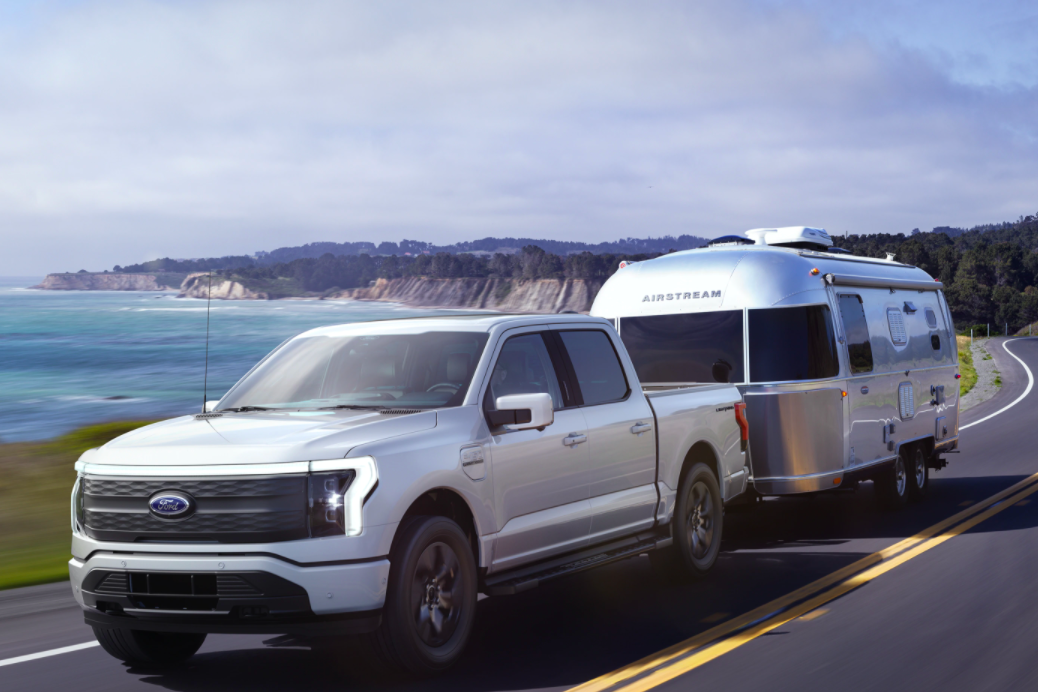
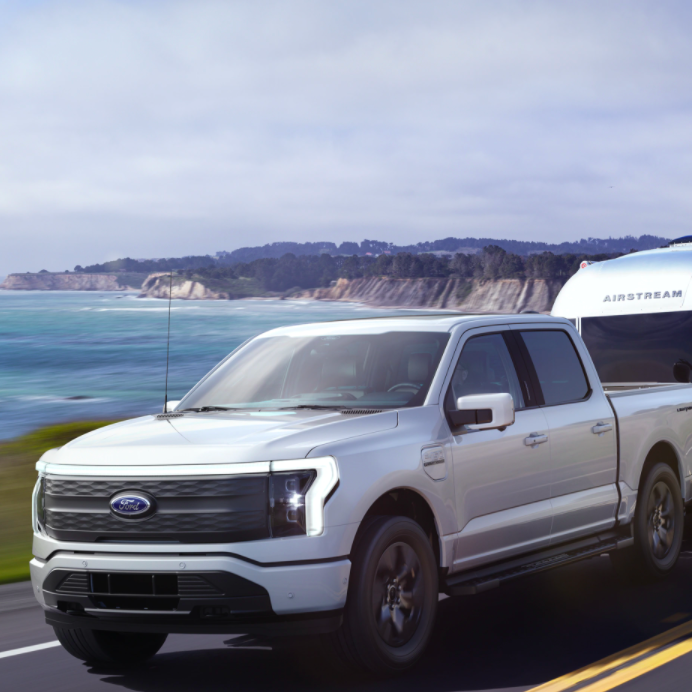
When you’ve been building the best-selling pickup truck in America for the last 40 years, which also happens to be the best-selling vehicle in the country outright, launching an all-electric version of it is big news.
When you invite on stage, a vice president of the United Auto Workers (UAW) to announce it - that’s groundbreaking, because it puts American workers at the center of the story and right now, that’s very welcome indeed.
Gerald Kariem, VP of the UAW’s Ford Department asserted before “pulling the covers off” the all-electric Ford F-150 Lightning on May 19 - with a bold statement that the new vehicle is going to be important for Ford workers, sustainability and the nation.
And though saying it’s important for the nation may be a little hyperbolic, it’s inarguably a very significant development from the blue oval, given the place the F-150 holds in America.
So, important in fact, that if this is the future of the F-150, they have to get it right. After all, Ford isn’t inventing a category - it’s building on a brand and the reputation that comes with it. An electric F-150 has to be a workhorse, and frankly, given that it’s a pickup, it’s going to have to prove to prospective buyers of such vehicles, that it’s every bit as good, if not better than its gasoline powered stablemates - with which it will coexist.
Using the Lightning sub-brand sets Ford’s intention with this truck. F-150s that have worn the Lightning badge in the past came out of Ford’s Special Vehicle Team (SVT), high performance unit, so clearly Ford has positioned the electric F-150 to put up some impressive numbers. It doesn’t disappoint.
Zero to 60 miles per hour in the mid four seconds range should persuade the performance oriented that it means business. That’s achieved by the extended-range versions outfitted with two inboard electric motors developing 563 horsepower and 775 foot-pounds of torque. Apparently, according to Bill Ford, when President Biden visited Ford in Dearborn earlier this week to preview the vehicle, he left some rubber on the track during his test drive. So, safe to say, it’s fast.
As for distance between charges, the top specification versions equipped with the extended range battery is good for an estimated 300 miles, though the less expensive entry level versions will be good for a still-respectable 250 miles.
In this category, vehicles have to be able to demonstrate they can tow stuff and the F-150 Lightning delivers here, too. It can haul a 10,000-pound trailer and accept a 2,000-pound payload in the flatbed. All wheel drive means weekend warriors will find it a very capable off-road vehicle too, and because there’s no internal combustion engine up front, the F-150 Lightning comes with a power “frunk” providing additional storage space to secure all your gear.
All of which is to say, the F-150 Lightning is pretty much a match for its gasoline powered stablemates. But it has another trick up its sleeve that is really impressive.
The chief engineer of the F-150 Lightning, Linda Zhang, pointed out something this F-150 can be, which its gasoline powered brethren cannot, and that is “your own personal power plant.” The Lightning comes with 11 power outlets distributed throughout the vehicle, which means as a work truck, it can operate power tools if you are working somewhere off the grid. And remarkably, in the event of a grid outage, Ford claims it can off-board up to 9.6 kW of peak energy to power a home for up to three days. A true utility vehicle!
Pricing is competitive, too. The commercial oriented version is set to start at just under $40,000 but fully kitted out vehicles will see that price top out at around $90,000, though buyers have options in between.
At this point, perhaps we have to address the elephant in the room. When Tesla announced its Cybertruck, we noted at the time that Elon Musk had the F-150 in its crosshairs. Tesla even conducted a video tug-of-war between an F-150 and a Cybertruck. The Cybertruck won.
But that was before the electric F-150 Lightning, and though it’s true, based on power statistics, the Cybertruck still wins that tug of war battle, there’s more to this competition than brute force. So, which is the better electric pickup?
In terms of price they start at the same place, with identical range targets, though the Cybertruck tops out at a lower $69,900. The Cybertruck promises a better range for its tri-motor version at 500 miles, which is hard to argue with. But if you use your truck as a work vehicle, are a traditionalist or a fan of the F-150 aesthetic - it’s easy to see buyers opting for something practical, and less outlandish than the Cybertruck.
And it has to be said, the F-150 Lightning still measures up with impressive performance figures. It also comes with creature comforts like handsfree highway driving via Ford’s Blue Cruise system and boasts other premium features. It’ll be built in Ford’s Dearborn Rouge Center, which Bill Ford says is the cleanest plant in the country.
So, it probably comes down to what you think a pickup truck is all about. It’s hard to be on the fence with the Cybertruck - you either love the way it looks, or you hate it. It promises to be at least as capable as a pickup. But Ford has the best-selling pickup in America; it can’t afford to mess up the formula, and the Lightning avoids doing so.
With that in mind, while the Cybertruck certainly makes a statement, the F-150 Lightning on the other hand, for most buyers, probably makes more sense.
Image credit: Ford
The Seafood Industry Needs a Net-Zero Commitment: No More Endangered Species Caught, Ever


Seafood is one of the most globally traded food commodities, and demand for it continues to rise. As a result, levels of fishing in many areas of the world are becoming increasingly unsustainable, and the list of endangered marine and freshwater species grows ever longer. Companies within the seafood industry are increasingly willing to work with governments and conservation groups to shift the seafood market toward more sustainable and responsible sourcing. At the same time, though, some companies have yet to ban endangered species from their supply chains—a bare minimum requirement on the path to sustainability.
Since 1970, global populations of marine species have halved, and according to World Wildlife Fund’s 2020 Living Planet Report, monitored freshwater species have declined on average by 84 percent. Europol estimates 100 metric tons of juvenile freshwater eels, equivalent to about 350 million fish, are illegally trafficked from Europe to Asia annually, and every year an estimated 100 million sharks are slaughtered for their fins. Studies also suggest that without effective management, species like black abalone are likely to become effectively extinct within 30 years.
This alarming loss of life is taking place out-of-sight, and therefore out-of-mind, for most consumers. Nevertheless, it has the potential to seriously impact human health and well-being—in ways both direct and indirect. Stable fish populations serve as a critical source of nutrition for our families. They are also crucial to sustaining healthy oceans, rivers and lakes—all delicate ecosystems that provide numerous benefits to people, including tourism, storm protection, flood control and more.
Individual consumers can make environmentally friendly choices for themselves and their families, but they don’t have the power to change the world’s seafood industry on their own. Companies, on the other hand, are uniquely positioned to address the biggest threats to marine and freshwater species directly, by ensuring their seafood supply chains are responsible.
For companies in the seafood industry, the conservation of endangered species represents the most basic step towards a sustainable seafood sourcing commitment. That’s why we’re calling upon companies to commit to eliminating marine and freshwater species from their seafood supply chains that have been identified by the International Union for Conservation of Nature (IUCN) as Endangered or Critically Endangered, as well as those listed in the Convention on International Trade in Endangered Species of Wild Fauna and Flora (CITES) Appendix I and II.
The IUCN Red List is the world’s most comprehensive source of information on the status of global conservation and a critical indicator about the health of the world’s biodiversity, while CITES is an international agreement between 183 countries ensuring that the trade of wild animals and plants specimens does not threaten their survival. Buyers should also abide by country-specific regulations regarding trade bans of certain endangered species.
Such a commitment would send a clear signal to suppliers that the harvesting of highly at-risk species is no longer acceptable. It is equally critical for seafood buyers in retail, food services and hospitality businesses to distance their brands from endangered species to avoid legal, regulatory and reputational risks.
To be clear, this would constitute a significant shift in the industry—one that comes with no shortage of challenges. Today, people consume over 400 endangered marine species. And with fragmented and opaque supply chains, seafood buyers are faced with the daunting task of accurately selecting and responsibly sourcing their products. Fortunately, companies now have a simple and practical guide to help them identify endangered species most commonly found in seafood supply chains and make informed sourcing choices.
The task that the seafood industry has in removing the most at-risk species from their supply chains and global operations will be an iterative process that spans many years. However, the end result—a more stable, responsible and resilient supply chain—will be worth the investment.
Image credit: James Thornton/Unsplash
Those Most Affected by Climate Change Must Have a Voice in the Global Environmental Movement
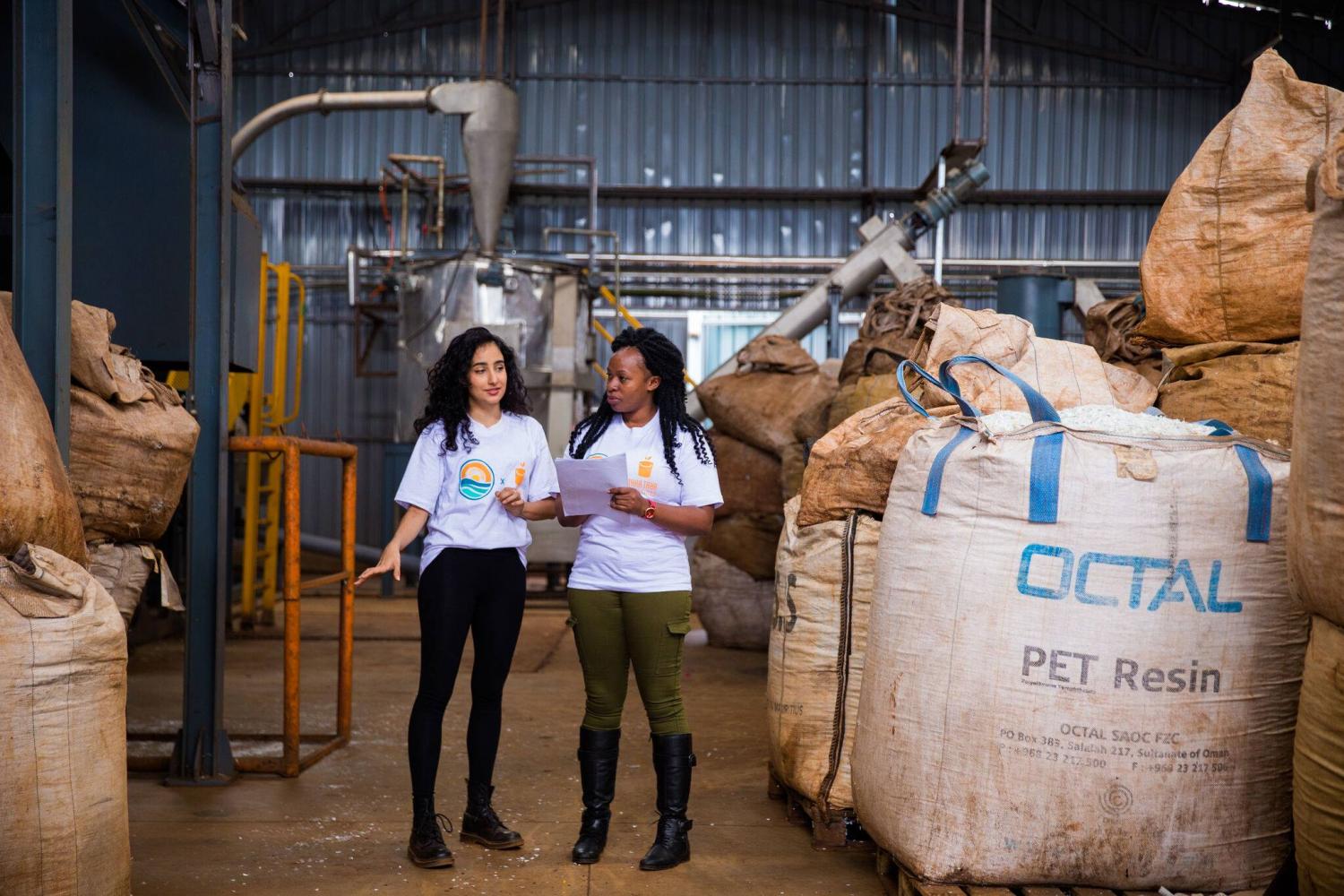
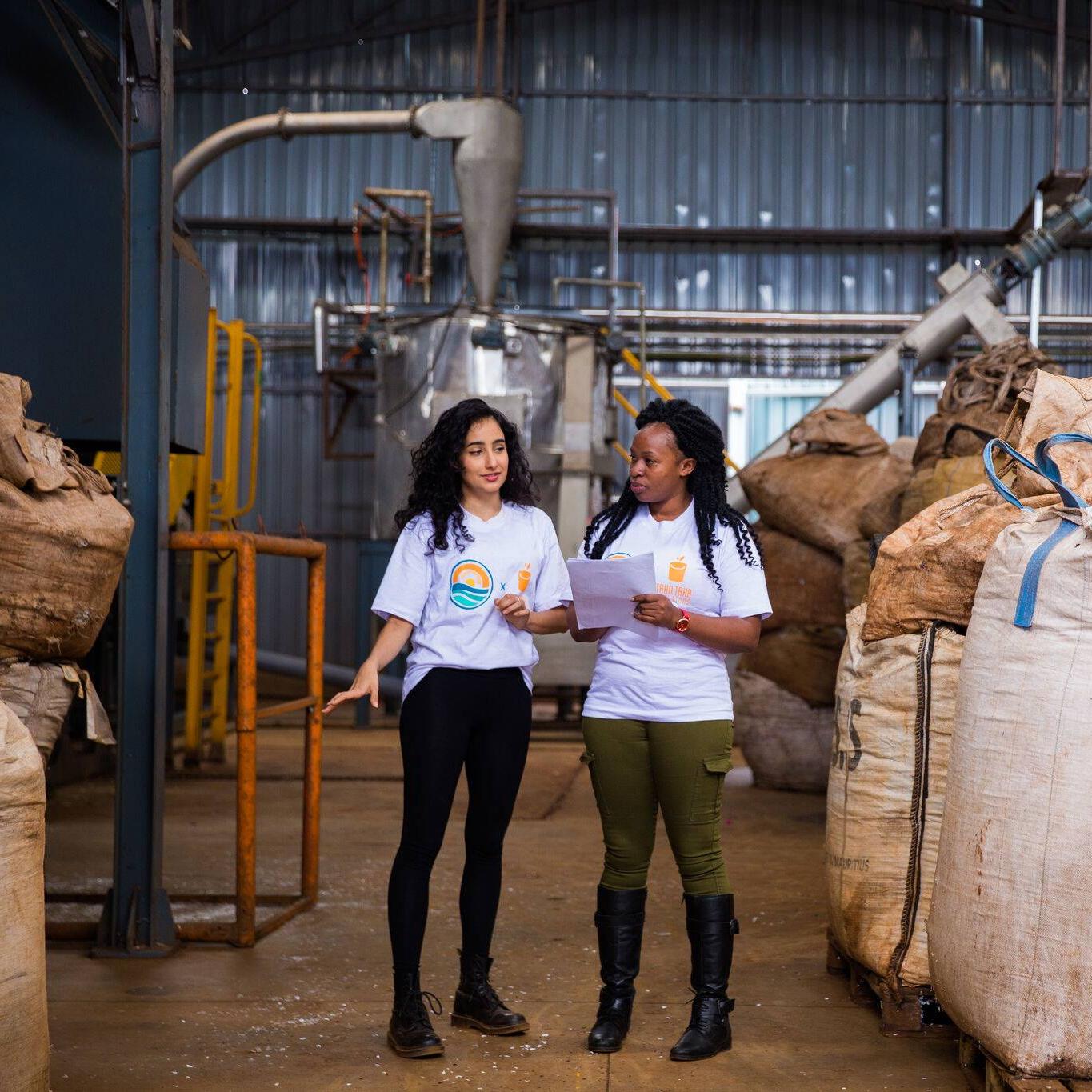
Many poorer communities, and people of color, are stuck in a climate change loop – as in enduring one natural disaster after another, along with ongoing climate change risks that disproportionately affects them. What’s troubling about this reality is that poverty often drives the decisions and circumstances of racial and ethnic minorities, such as their place of residence. Further, people of color often reside in areas that are susceptible to climate catastrophes – or they live in regions where there is a high probability they can lose their land, as in regions where crops for biofuels are grown.
Hurricane Katrina exemplified this problem: 58 percent of communities affected by the 2005 storm were minorities and 80 percent of people who lived in the flooded areas were minorities as well. The repercussions of climate change have exacerbated financial hardship within these communities, further widening the existing gaps in incomes and economic opportunities.
In addition to the conversations about reducing global greenhouse gas emissions, the inequalities in climate action plans was a leading point of discussion during the recent Nobel Prize Summit. While it’s clear that global industry leaders, NGOs and companies are cognizant of climate research and are increasingly taking action on this front, there is one overlooked matter: the lack of diversity and representation in the global environmental movement.
The #ColorForClimate Campaign
During the summit, Svanika Balasubramanian, one of the co-founders of rePurpose Global, presented an eight-point agenda and petition as part of the #ColorForClimate campaign, which addresses the lack of diversity and representation in the global climate action movement. During the event, Balasubramanian introduced the need to include young adults of diverse backgrounds - many of whom are facing climate change challenges - in policymaking, corporate boards and advisory groups that focus on global climate movement.
Among the eight demands for which Balasubramanian and rePurpose Global are calling include: equal representation at climate negotiations; incorporating diversity in environmental financing; expanding and collecting climate research from the Global South; and investments in the developing talent in marginalized communities.
In an interview with TriplePundit, Balasubramanian explained the existing gap in the global climate movement. “People who are making the decisions and the people who are actually facing the consequences of the decision aren’t necessarily the same,” said Balasubramanian. “The conversations around environment and sustainability happens in these ivory towers even though the Global South and people of color are disproportionately affected by it.”
A gap in who causes climate change and who suffers from it the most
From 1990 to 2015, global carbon emissions increased annually by 60 percent. Oxfam has estimated that the wealthiest 10 percent of global population were responsible for 52 percent of carbon emissions while the poorest 50 percent were responsible for 7 percent of carbon emissions. Despite their low contribution, women, minorities and indigenous communities disproportionately experience the majority of climate change’s consequences.
In other words, impoverished households in hot countries are more likely to be exposed to higher temperatures. In India, for example, the majority of workers in India’s agriculture and construction sectors are the most vulnerable to dangerous heatwaves. The same can be said for immigrants who work on farms in California’s Central Valley.
The gap between decision makers and vulnerable communities presents a huge global challenge. In 2019, minorities only comprised 20 percent of the U.S.’s top environmental agencies and foundations – in a country where 40 percent of the population is of a racial or ethnic minority background, and that percentage is increasing rapidly. If solution-focused conversations in these arenas exclude vulnerable communities, how can we ensure these global solutions will help everyone?
Offering a seat at the table for ignored voices
One of the petition’s demands includes introducing a “reality seat.” As Balasubramanian explained to 3p, “Every time you are making a decision, have someone who represents the reality of that decision at that table,” said Balasubramanian. “That needs to be someone who is under the age of thirty-five and is directly from the community that is going to be most affected about what you’re talking about today.”
According to Balasubramanian, creating a reality seat can apply for fair representations within governments, NGOs, social enterprises and even the financial industry. The benefits of creating these seats for diverse voices is not only patently ethical, but could also be rewarding from Balasubramanian’s perspective. “The solutions itself will be so much more efficient and so much more holistic and so much more long term in nature if we are listening to actually what happens on the ground and what is doable and what is effective,” added Balasubramanian. Equal representation within institutions also helps the development of partnerships with diverse groups and organizational funding.
Balasubramanian explained at the summit that she was often the only young person of color amongst industry professionals. To that end, the team at rePurpose Global is aware of the lack of diversity and the benefits of including diverse voices. The plastic credit platform is led by young individuals of color who help companies become “plastic neutral” by helping them fund plastic recycling equivalent to the amount they produce. Based in India, rePurpose Global funds plastic recovery and waste management projects in South America, Africa (including one in Nairobi, Kenya, shown above) and Asia. Some of these projects such as Asara Wealth Association have engaged informal waste collectors in informal employment and Saahas Zero Waste that has improved health facilities.
The global environmental movement cannot leave any community behind. While many individuals and organizations are diligently working towards reducing carbon emissions and coming up with solutions for climate action, there is still room for more including more people in finding ways to stop climate change. And who is better to include in this process, while ensuring everyone has a seat at the table, than the communities who are directly and disproportionately at risk the most by climate change and any potential solutions.
Image credit: rePurpose Global/Facebook